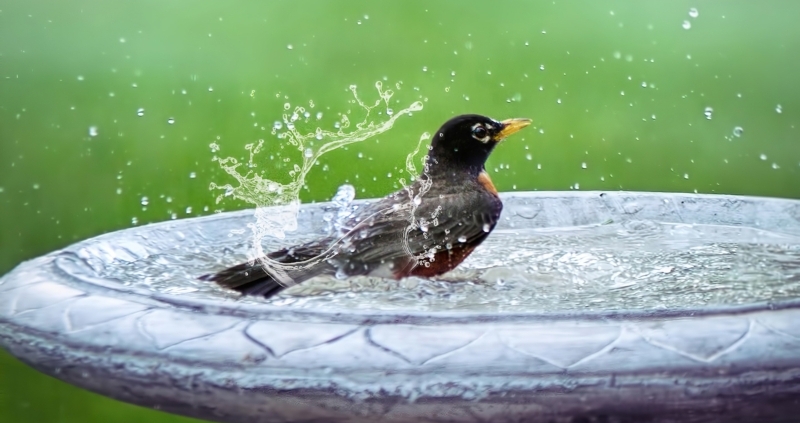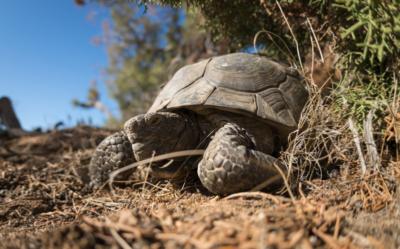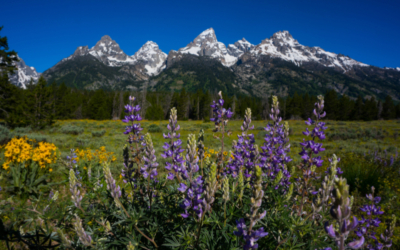Practical or Pretty? Garden Enhancements that Benefit Wildlife
The sun is shining, birds are chirping and new blades of grass are beginning to poke up through the brush. With spring approaching, now is the time to start planning a beautiful, beneficial garden. Native, pollinator-friendly plants serve as food and shelter for wildlife while improving aesthetics, and planting guides are an excellent resource to determine the best plants to include in a garden.
But once the garden plot has been designated and the plant list has been determined, what about the human-devised enhancements? While it may be fun to paint a butterfly house or install a bird feeder, which of these garden additions are truly practical for native wildlife, and which are just pretty ornamentation? In this blog, we’ll explore common garden enhancements that provide valuable benefits for species as well as alternatives for some less-practical features.
Flutter by the butterfly house
Floating along on gusts of temperate wind, butterflies feel like a sure sign of spring. If the native plants in your garden are attracting butterflies, it may be tempting to get them to stay a little longer by constructing a butterfly house. But these slender structures, while pretty, don’t tend to be very popular with the target species. Instead, a butterfly house is often likely to end up a roach motel or a wasp haven.
Instead, arrange a selection of flat rocks in an area that receives ample sunlight. Butterflies are ectothermic, which means they need heat from the sun to regulate their body heat, and if their body temperature drops too low, butterflies are unable to fly. Flat, warm rocks provide the perfect place for butterflies to flatten out their wings and warm up — and may be much more inviting than a butterfly house.
Take a dip in the bird bath
It is infinitely fun to watch birds splash around in a bird bath, and in addition to their entertainment and aesthetic values, these enhancements serve a very practical purpose for wildlife. The bathing aspect is just a small part of the function of bird baths – more practically, they provide safe drinking water. Especially in the hot summer months, a source of drinking water makes a space much more wildlife friendly.
Bird bath location is key, as birds will prefer a bird bath where they feel safe. Installing a bird bath near trees or other vegetative cover gives birds a protected place to perch. Cover from trees will also keep the birth bath from getting too hot during the day and prevents algal growth.
While designing a bird bath, consider adding water features for species beyond birds. Shallow puddles are suitable for bees and butterflies, and they are easy to construct using a large saucer, some sand and several small rocks. A few pieces of fruit or fruit juice can be added to further entice these species to your garden puddle.
Welcome to the toad abode
Toads are an unsung garden hero, as they eat common pests like mosquitos and slugs. Attracting toads to help address a pest problem may be a priority, and some gardeners want to give these visitors a permanent home in the form of a toad house.
It can be a fun project to design and decorate a toad house — and if the house is made from non-toxic materials, it won’t be harmful — but it’s not a necessary step to ensure toads have a suitable habitat.
Opting to use materials like rocks, sticks or leaf and brush piles can be effective too, as amphibians like toads often seek cover in these natural shelters. A simple piece of plywood or metal can easily become a coverboard, which provides warm conditions as well as cover from predators for a variety of reptiles and amphibians.
Bird feeding frenzy
As spring unfolds, so does an increase in bird activity. Migratory species are returning, and avians of all kinds are trying to attract a mate, build a nest and of course — find food. There is debate about the benefits of bird feeders, especially during times of the year when food sources may still be scarce.
There are several risks associated with bird feeders. As they attract a large number of different birds to a relatively small area, feeders can lead to a higher likelihood of birds contracting parasites or pathogens from each other. Also, a bird feeder’s proximity to windows could result in increased bird strikes. In general, introducing bird-safe window fixtures such as decals, tape or screens is a good practice to help protect birds from window collisions.
Relying on nature rather than humans for food is generally a more sustainable option for wildlife, so including bird-friendly native plants in the garden is great way to help feed the birds. By summertime, when plants are in bloom and insects are plentiful, birds can usually find food without human assistance.
A place to nest, a place to roost
It is estimated that millions of acres of bird habitat are lost each year. Along with this habitat loss comes a lack of access to nesting resources, which impacts bats as well as cavity-nesting birds. With both bat and bird populations experiencing declines worldwide, providing nest boxes for these species in or near a garden is a beneficial way to help their numbers rebound.
Ideal nest box specifications depend on the location and the type of bird being targeted, but it is recommended that nest boxes be built from untreated wood and galvanized screws, with a sloped roof and drainage holes to keep the nest dry. Predator guards protect the young inside, and routine nest box monitoring provides data that can be submitted to community science initiatives to provide insight into the health of the population.
Looking for more tips on constructing a nest box? Watch our on-demand webinar, and then enter your nesting structure in our contest by November 1!
If you’re interested in supporting other winged wildlife, bat boxes are a beneficial way to provide safe roosting places. The ideal location for a bat box is in an area where bats have been observed feeding. Mount a bat box on a building or large structure rather than a pole or tree, as these provide a consistent temperature for the interior of the box. Ensure the bottom of the bat box is at least 10 feet from the ground and 20-30 feet from any trees, and clean or repair the boxes in autumn or winter when they are not occupied.
Part of the fun of planning a garden is deciding which enhancements will feature in it, and these tips can help ensure any garden additions this spring are both practical and pretty.



